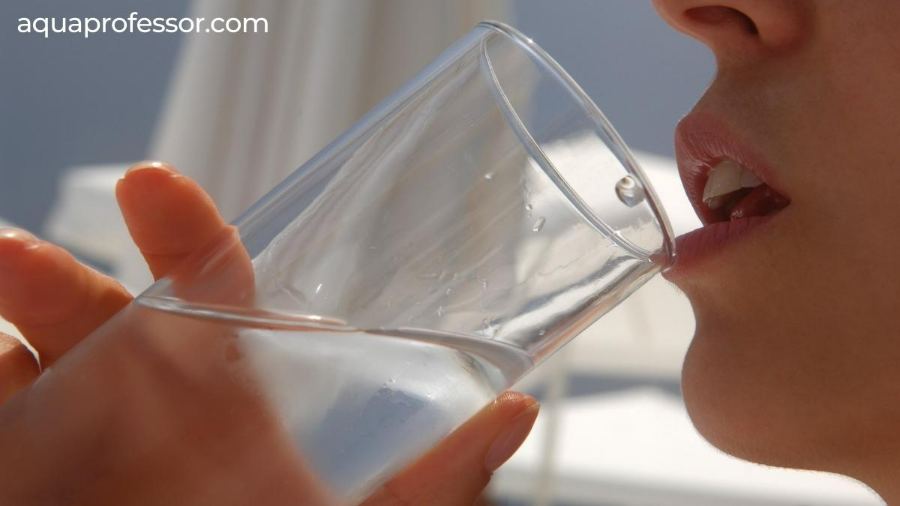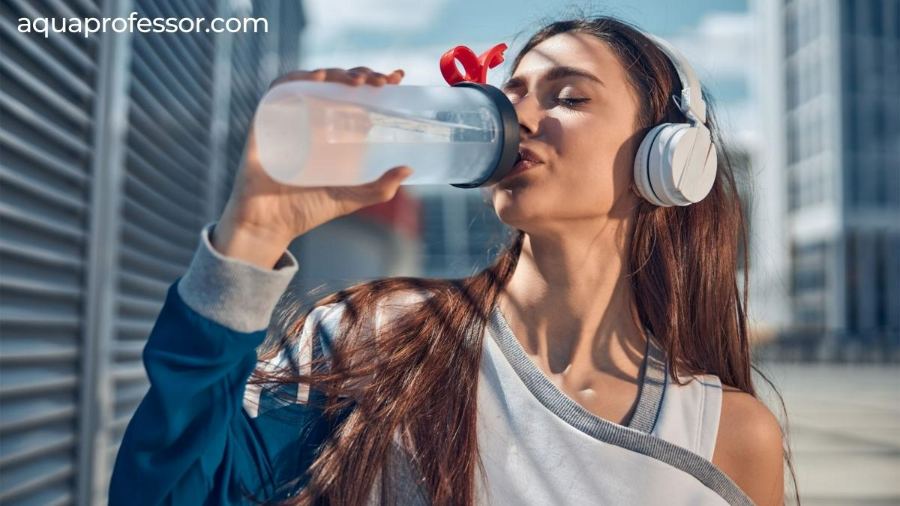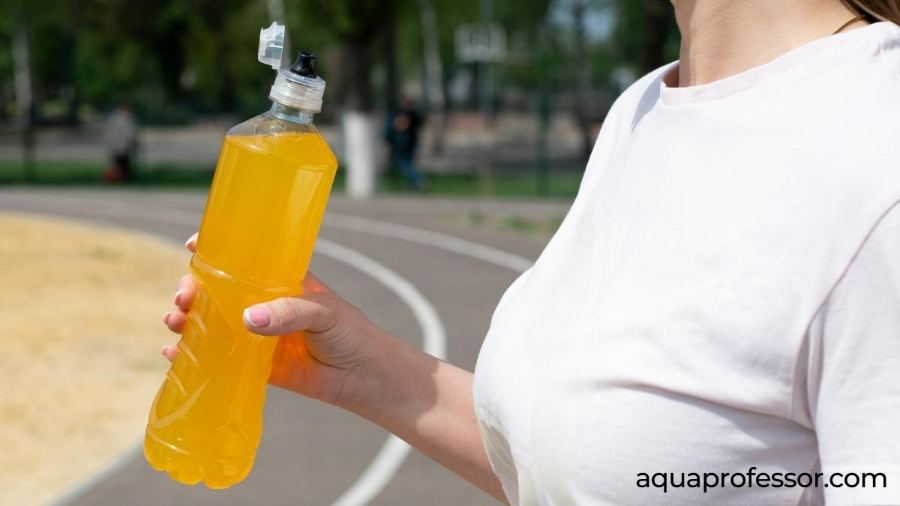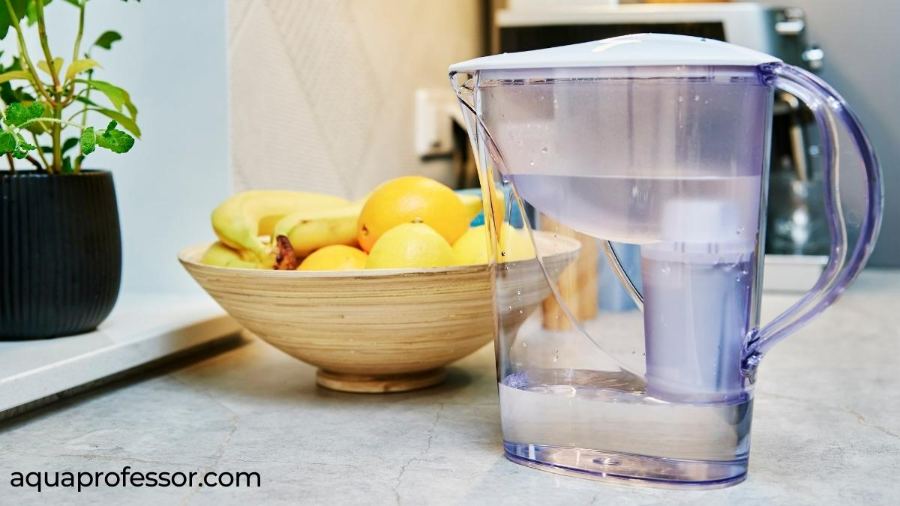
Have you ever felt your RO-filtered drinking water less hydrating than spring water and wondered, does reverse osmosis water dehydrate you?
Reverse Osmosis water is like diet drinking water that is not dehydrating in nature. This pure water’s lower electrolyte and mineral content makes you thirsty. But, hey! It doesn’t mean you have to consider reverse osmosis water bad for this reason.
You can pour some electrolyte powder into your reverse osmosis drinking water before you drink it to remineralize it with lost minerals.
Continue reading for a detailed guide on making your reverse osmosis drinking water more hydrating and mineral-enriched to make it ideal for human consumption.
🎛 Can Drinking RO Water Make You Thirsty?

Reverse Osmosis is an efficient method to remove impurities and contaminants from water to get pure water that is safe for drinking.
This process for purifying water efficiently removes almost 99.9 percent or more of Total Dissolved Solids (TDS) from the contaminated water, including various heavy metals, bacteria, Radium, chlorine, chloramines, etc.
However, it also eliminates:
Because of this lack of essential minerals and electrolytes, consuming RO water makes you feel less refreshed.
The WHO report clearly states that reverse osmosis (demineralized) purified water is not ideal for drinking because of the scarcity of beneficial minerals, which may lead to a crisis of those valuable nutrients inside your body. So, it may impact the health of humans and animals.
🥤 How Do You Make Reverse Osmosis Water Hydrating?

Here are some easy-to-apply DIY methods to make your reverse osmosis drinking water hydrating:
⬛ Use RO Remineralization Filter (Best Method)
If you want a hassle-free way to add essential minerals again within your RO-generated low-mineral water and further enhance its drinking water quality, installing a reverse osmosis remineralization water filtration system is a fantastic option.
You can buy a remineralization filter from the market and install it with your main waterline beside your reverse osmosis unit. It will ensure a regular supply of mineral-rich drinking water from the tap and the proper transmission of those essential elements into the human body.
The post-filter cartridges for remineralizing drinking water cost approximately $30-$80 and need semi-annual replacement.
🧂 Adding Himalayan Sea Salt
Adding pinkish Himalayan sea salt into your RO water will do the job if you want a natural way to remineralize the water generated via reverse osmosis technology.
Once you put the salt within the demineralized drinking water, the beneficial calcium, magnesium, potassium, and other high-trace minerals in the salt get mixed with the reverse osmosis water to remineralize.
Here’s how you should do it:
This drinking water balances your body’s negative and positive ions within your body and enriches your overall health.
Note:
Avoid adding too much of this salt (more than 2.3 grams) if you’ve high blood pressure or similar complications. Otherwise, it will inflict a definite adverse influence on your health.
🧴 Adding Electrolyte Powder

If there’s something that can hydrate you more promptly than plain drinking water, it’s electrolyte powder.
It balances the fluids inside your body and saves you from dehydration-related symptoms such as fatigue, thirst, headaches, etc.
The electrolyte powders are mainly packed with sodium (Na2), chloride (Cl2), potassium( K2), and magnesium (Mg2).
However, consuming water mixed with electrolyte powder is always recommended only when you are feeling excessively thirsty or sweating after a workout (occasionally) and not regularly.
Also Read: Does Vitamin Water Have Electrolytes?
💊 Adding Mineral Tablets/Drops
Adding mineral tablets or drops is also a great way to remineralize the water produced through reverse osmosis technology.
The process is very simple. First, add a few drops or tablets (according to the guidelines mentioned in the packet) in your reverse osmosis system-yielded low-mineral water.
However, it’s necessary to add these mineral tablets or drops each time you drink water filtered via the reverse osmosis process.
These drops or tablets cost between $20 to $40 (each file).
⚱ Using an Alkaline Pitcher

If you need to add beneficial calcium (Ca) and magnesium (Mg) to your RO water, using an alkaline pitcher is an easy, budget-friendly option. In addition, they don’t give you the headache of installing them along your water line.
Here’s the process for you:
They cost between $20 to $40, and the filter cartridges need replacement every three months. However, the replacement cost of the cartridges is very low compared to that of the replacement remineralizing filters.
🎛 Does Reverse Osmosis Water Dehydrate You: FAQs
🤔 Are there any disadvantages to drinking reverse osmosis water?
Yes, there are certainly some disadvantages of drinking reverse osmosis water. So, the next time you go to drink reverse osmosis water, remember the following-
1. Reverse osmosis filters, in the process of getting pure water, remove various healthy and essential minerals along with unwanted contaminants
2. Reverse Osmosis water is slightly acidic and tastes bland.
3. Reverse Osmosis water filters can be costly to install and maintain.
4. Reverse Osmosis filters waste a lot of water.
🧐 Is it better to drink tap water or reverse osmosis water?
In most cases, tap water from the municipal supply is safe to drink as municipalities treat it for contaminant removal.
However, this treatment process can add an excess dose of chlorine to the water. Conversely, reverse osmosis treats the extra chlorine from municipal tap water.
It makes your home water safe by removing 99.99 % of Total Dissolved Solids, including different harmful chemicals and other contaminants, thus saving animal and human organisms from serious ailments.
However, a reverse osmosis system wastes water and may not contain healthy minerals.
So, it’s important to test your home water before installing a reverse osmosis water filtration system to be fully sure which filter type you need.
🚫 Is RO water banned in Europe?
No, the European Union has not banned reverse osmosis water purification systems or RO water for drinking and other purposes. Only processing of natural mineral water using RO is outlawed.
So, no matter what reverse osmosis system it is, you can buy and use it at home.
Even the reverse osmosis system that wastes up to four gallons of water each time is legally approved. You can purchase reverse osmosis systems from hardware and online stores in Europe.
⚙ What does reverse osmosis not remove from water?
Even though reverse osmosis membranes are famous for removing 99.99 percent of harmful contaminants from your drinking water, including various heavy metals, bacteria, viruses, pathogens, etc., they fail to remove certain contaminants. They are:
1. Pesticides
2. Herbicides
3. Some specific solvents
4. Various organic compounds
5. Hydrogen sulfide and other dissolved gasses
6. Fungicides
7. Agricultural treatment commodities
8. Some Volatile Organic compounds or chemicals
🌬 Can RO water damage the kidneys?
Reverse osmosis water is good for the kidneys. A reverse osmosis system removes heavy metals which can be otherwise bad for the kidneys.
Yes, indeed, reverse osmosis drinking water doesn’t provide our body with enough minerals that it needs.
But, it must also be considered that we’re not supposed to get minerals from water as much as from our balanced diet.
So, the essential minerals that the reverse osmosis water lacks can be fulfilled by an appropriate diet or by remineralizing the reverse osmosis drinking water back using the following techniques-
1. Putting mineral drops
2. Installing remineralization filters
3. Using alkaline pitchers
4. Using alkaline water bottles
5. Adding Himalayan salt to your reverse osmosis purified water
6. Adding electrolyte powder to your reverse osmosis drinking water
Adarsh is a Health & Nutrition Sciences graduate with expertise in environmental health. He is associated with ventures like Glacier Fresh Filter and Simpure Filter Systems. Through Aqua Professor, he intends to provide helpful information to every home to help them make smarter decisions.
